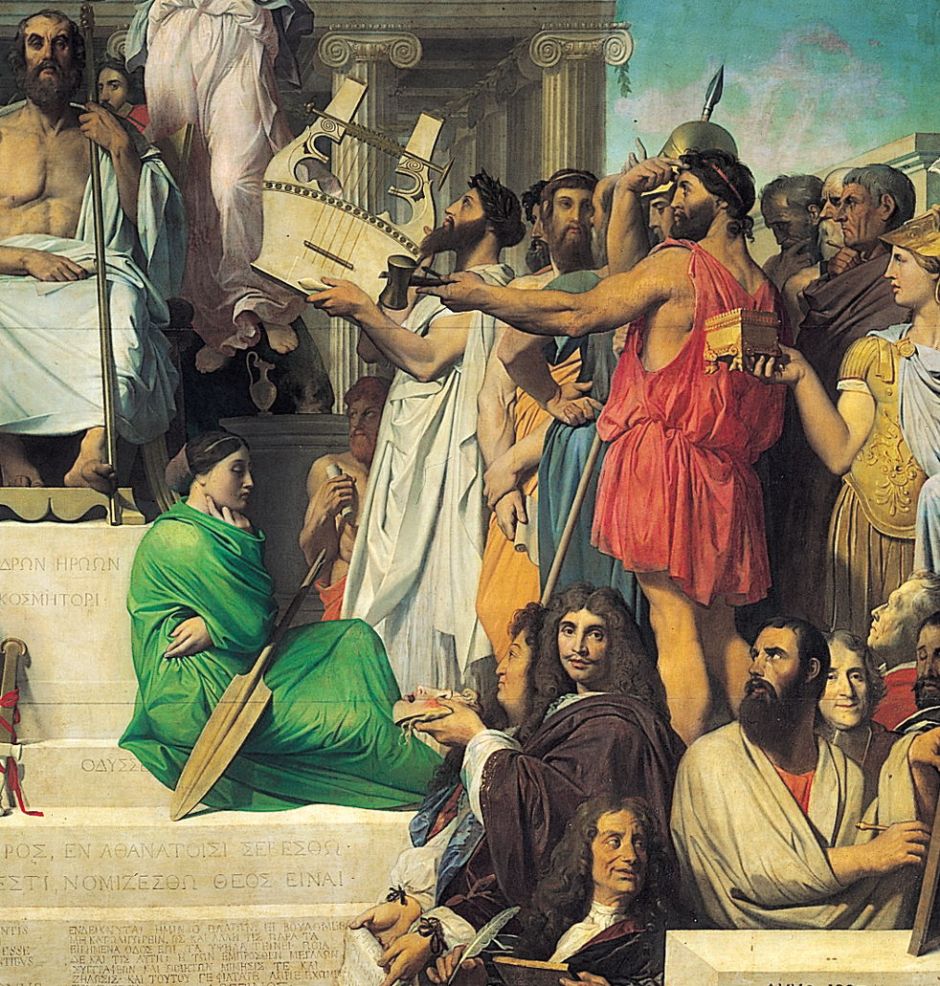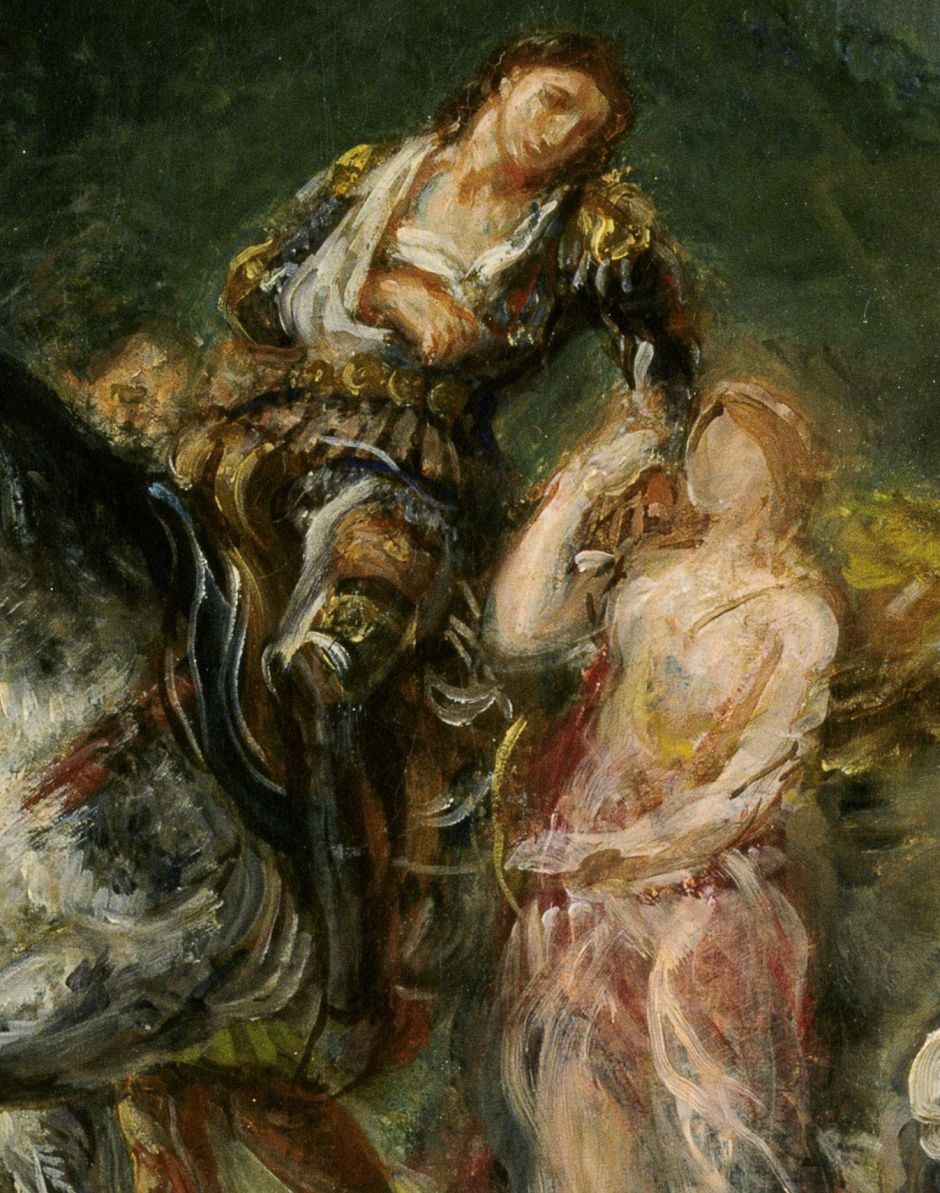While the portrait painters of the late eighteenth century were working surface texture into the fine dress of their sitters, art was on the change with the arrival of Neoclassicism and its bright, clean look.

Its leader, Jacques-Louis David, paid great attention to the folds in fabrics, and their colours, but surface texture and even weight took a back seat. In this smaller copy of his original Oath of the Horatii, which he painted in 1786, the fabrics appear uniform, and their optical properties aren’t even clearly distinguished from flesh or the metal swords.

The same is true of the ample fabrics shown in The Death of Socrates from 1787.

Even close up in The Anger of Achilles (1819), David pays little attention to the texture of the plume on Achilles’ helmet, at the left, and the robes appear uniform.

David’s pupil and fellow Neoclassical painter JAD Ingres followed this pattern. The abundant robes in his Apotheosis of Homer from 1827 must have been created the same, although he was more traditional in depicting fabrics in his portraits.

These details of this large and formal composition reveal the same emphasis on natural folds and wrinkles, but little in terms of surface texture.

As Neoclassicism turned to the Romantic, Eugène Delacroix revealed his influence from Rubens and the Venetian emphasis on colour. His approach to the depiction of clothing and fabrics also changed.

At the same time that Ingres completed his large Apotheosis of Homer, Delacroix was finishing his equally large Death of Sardanapalus (1827), which retains the Neoclassical approach to its fabrics.

By the time he painted this smaller replica seventeen years later, his brushwork had become more painterly.

As Sardanapalus rests on his great divan staring coldly into the distance, his head propped by his right hand, his robes are dissolving into bravura strokes of paint.

By the middle of the nineteenth century, the garments in Delacroix’s paintings were in perpetual motion, as seen in his Eurydice Bitten by a Serpent while Picking Flowers (Eurydice’s Death), from 1856-63.

While that works well in a motif with movement in its story, it makes reading garments more challenging in this narrative painting of Angelica and the Wounded Medoro from about 1860.

Medoro’s sling remains clear, but what isn’t so obvious in this detail is the fact that he’s still wearing his armour, rather than a jacket ornamented with gold braid.

Gustave Courbet also started painting more uniform clothing without surface texture, but by 1853, when he painted The Sleeping Spinner, he had adopted a more conventional approach. He makes clear distinction between different fabrics in this young woman’s shawl, her floral dress, and the wool that she has been spinning before she fell asleep.

Before he unwrapped his models altogether later in his career, Courbet paid greater attention to the fabrics and garments of contemporary fashion. His notorious Young Ladies Beside the Seine (1856), showing a pair of prostitutes relaxing under a tree, uses their clothing to shock: the woman nearer the viewer is clad in her corset-cover and petticoat, at the time considered to be reliable signs that she lacks moral virtue.
Reference
Anne Hollander (2002), Fabric of Vision, Dress and Drapery in Painting, National Gallery and Yale UP. ISBN 1 85709 907 9.

